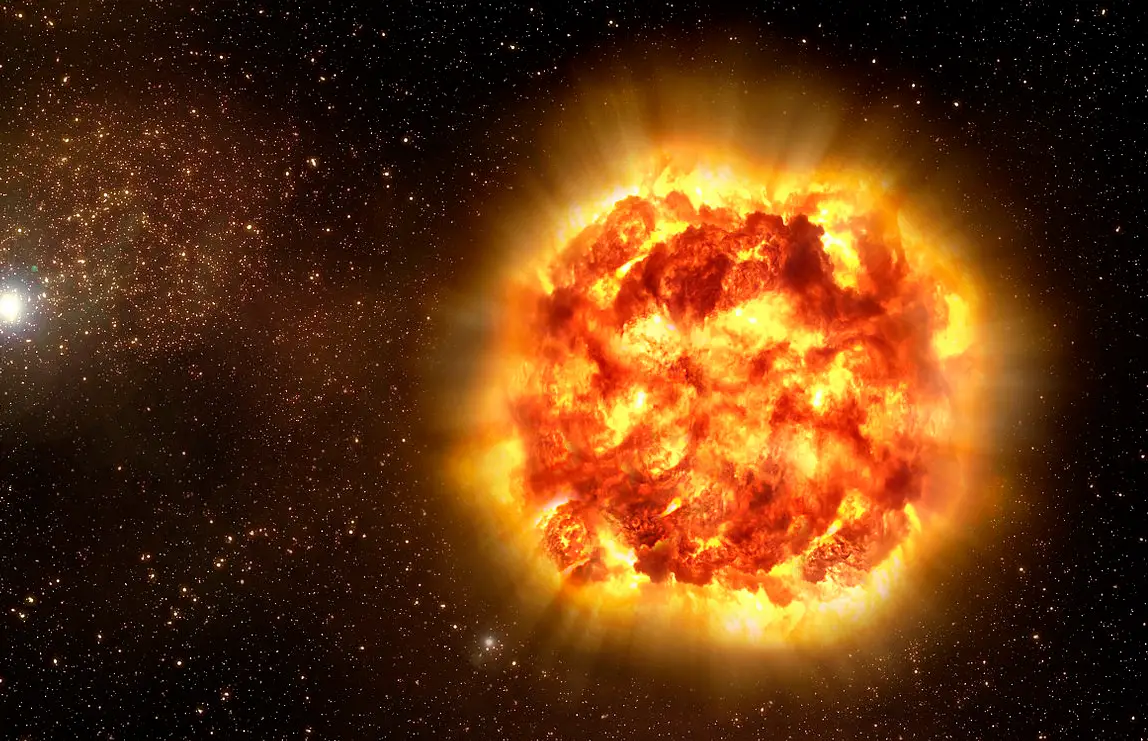Betelgeuse usually is the 10th most splendid star in the night sky and, after Rigel, the second-most brilliant in the heavenly body of Orion. It is a particularly rosy semiregular variable star whose evident extent, changing somewhere in the range of +0.0 and +1.6, has the most extensive reach shown by any first-size star. Betelgeuse is the most brilliant star at close infrared frequencies in the night sky. Its Bayer assignment is α Orionis, Latinised to Alpha Orionis and condensed Alpha Ori or α Ori. Delegated a red supergiant of phantom sort M1-2, Betelgeuse is perhaps the biggest star apparent to the unaided eye. Betelgeuse Supernova’s surface would lie past the space rock belt, and it would overwhelm the circles of Mercury, Venus, Earth, and Mars, if it were at the focal point of our Solar System. By the way, there are a few more prominent stars in the Milky Way, including super giants.
Physical Characteristics of Betelgeuse Supernova
Physical aspects of Betelgeuse Supernova include its mass, motion, dynamins, diameter, out appearance etc. Betelgeuse is an exceptionally massive, brilliant yet excellent star named an M1-2 Ia-abdominal muscle red supergiant. The letter “M” in this assignment implies a red star having a place with the M otherworldly class. And accordingly has a generally low photospheric temperature; the “Ia-abdominal muscle” postfix iridescence class demonstrates a moderate radiance supergiant, with properties mostly between a typical supergiant and an iridescent supergiant. Starting around 1943, the range of Betelgeuse has filled in as one of the steady anchor focuses by which different stars are ordered.
The star is additionally a slow rotator and the latest speed recorded was 5.46 km/s—a lot more slowly than Antares, which has a rotational speed of 20.34 km/s. The pivot period relies upon Betelgeuse’s size and direction to Earth, yet it has been determined to require 36 years to turn on its hub, leaning at a point of around 60° to Earth.
The kinematics of Betelgeuse is complex Betelgeuse has not generally had its present movement through space yet has shifted direction at some time, potentially the consequence of a close-by heavenly explosion. The in all likelihood star-arrangement situation for Betelgeuse is that it is a runaway star from the Orion OB1 Association. Initially, an individual from a high-mass numerous framework inside Ori OB1a, Betelgeuse was likely shaped around 10–12 million years ago, yet has advanced quickly because of its high mass. In 2015, H. Bouy and J. Alves proposed that Betelgeuse may instead be an individual from the newfound Taurion OB affiliation.
Life Phases of Betelgeuse Supernova
Betelgeuse is a red supergiant developed from an O-type principle succession star. Its center will ultimately implode, creating a cosmic explosion blast and leaving behind a reduced leftover. The subtleties rely upon the specific starting mass and other actual properties of that primary grouping star.
You must assess the underlying mass of Betelgeuse by testing distinctive heavenly transformative models to match its present noticed properties. The questions of both the models and the current properties imply unique vulnerability in Betelgeuse’s underlying appearance. Yet, its mass is customarily assessed to have been in the scope of 10.1–25.1 M, with present-day models tracking down upsides of 15.1–20.1 M.
Its synthetic cosmetics can be sensibly expected to have been around 70.2% hydrogen, 28.2% helium, and 2.42% weighty components, somewhat more metal-rich than the Sun yet in any case comparable. The underlying pivot rate is unsure; however models with delayed to direct beginning turn rates produce the best matches to Betelgeuse’s present properties.
Is Betelgeuse Destined to Go Supernova?
While scientists agree that Betelgeuse will one day explode, they can’t predict exactly when it will happen. Estimates vary from within a few thousand years to tens of thousands of years. But there is one thing we do know for sure: When Betelgeuse does go supernova, it will be bright enough to be seen during broad daylight.
![]()
